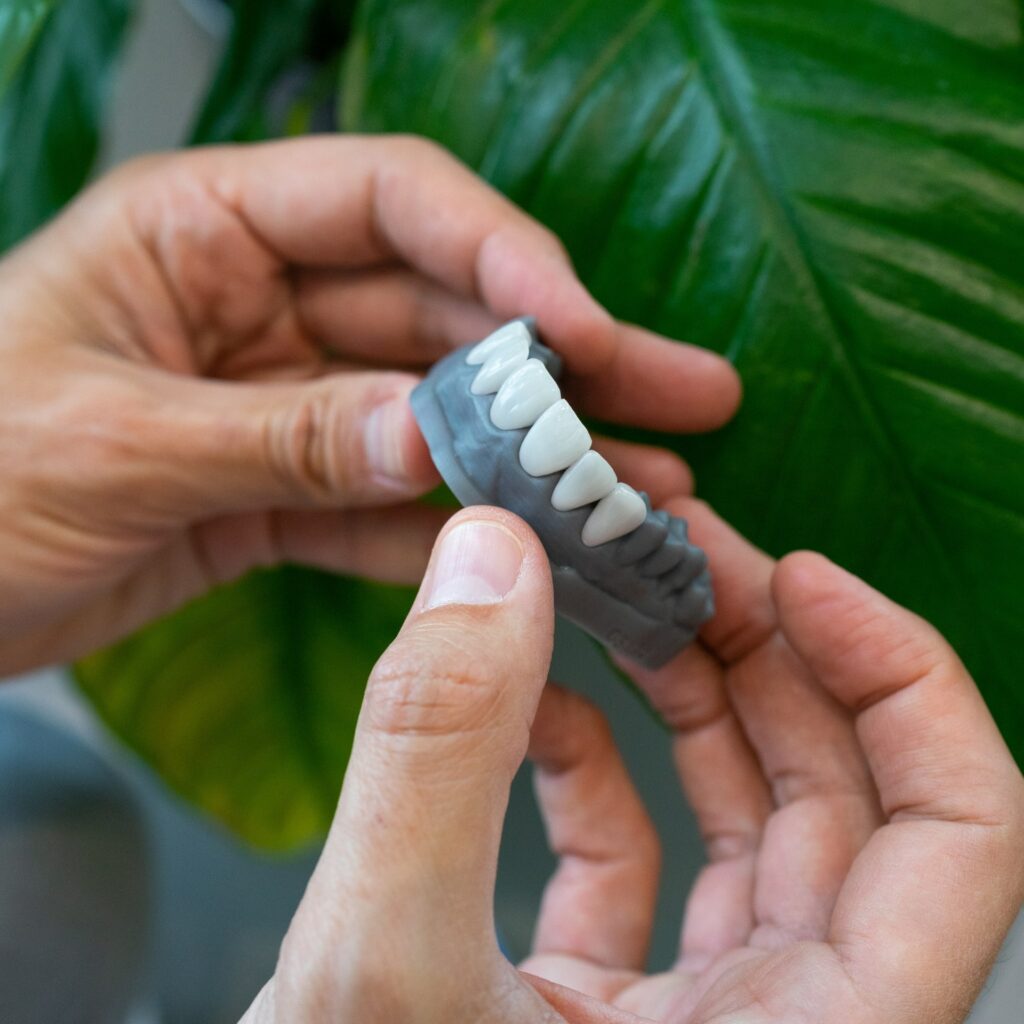Porcelain or composite veneers?
Introduction
Welcome to Dr. Bruno Pereira’s blog! In this space, we will explore the fascinating world of dental veneers and discuss the difference between composite and porcelain veneers. If you are looking to improve your smile and achieve perfect teeth, dental veneers are an excellent option to consider. In this article, we’ll give you the full lowdown on veneers, their benefits and how they can transform your smile. Let’s start exploring the world of dental veneers!
What are dental veneers?
Dental veneers are thin shells made of porcelain or composite that are placed on the front of teeth to improve their aesthetic appearance. They are designed to correct problems such as stained, misaligned, chipped or gapped teeth. Dental veneers provide natural, long-lasting results, giving patients a radiant smile and confidence in their dental appearance.
Difference between composite and porcelain veneers
Composite veneers
Composite veneers are made of a resin composite material that is bonded directly to the teeth and moulded to create the desired shape. This type of veneer is a more economical option and requires less tooth preparation. Composite veneers can be fitted in a single visit to the dentist.
Composite veneers are an excellent option for those who wish to correct minor aesthetic problems, such as minor stains or small irregularities in the shape of the teeth. They are also a reversible option, as they can be easily modified or repaired if necessary.


Porcelain veneers
Porcelain veneers are made of high-quality dental ceramics and are custom-made in a dental laboratory. They are stronger and more durable than composite veneers and look very similar to natural teeth. Porcelain veneers are bonded to teeth in a process that requires a slight reduction of tooth enamel.
Porcelain veneers are ideal for correcting more significant problems, such as severely stained, worn, chipped or slightly misaligned teeth. They provide exceptional aesthetic results and can last for many years with proper care.
Advantages and disadvantages of each type of veneer
Advantages Composite veneers
- Natural appearance: Composite veneers can be moulded and sculpted directly in the dentist’s office, achieving a result very similar to natural teeth.
- Faster process: The placement of composite veneers is usually quicker, as it is done in a single visit to the dentist, without the need for an external dental laboratory.
- Simple repairs: In case of damage or wear, composite veneers can be easily repaired without the need for complete replacement.
Disadvantages Composite veneers
- Less durability: Unlike porcelain veneers, composite veneers may require replacement in a shorter period of time.
- Increased susceptibility to stains: The composite may be more prone to staining over time, especially if foods or beverages that stain teeth are consumed.
Benefits Porcelain veneers
- Premium aesthetics: Porcelain veneers offer a natural, translucent appearance similar to tooth enamel, resulting in a very natural and attractive smile.
- Exceptional durability: Porcelain veneers are highly resistant to staining and discolouration, and can last for many years with proper care.
- Customisation: These veneers are custom-made, allowing the dentist to adapt their shape, size and shade to achieve highly aesthetic and personalised results.
Disadvantages Porcelain veneers
- Higher cost: Porcelain veneers are usually more expensive than composite veneers due to the manufacturing process and the quality of the material used.
- Longer process: The fitting of porcelain veneers is a time-consuming process, as it is carried out in an external dental laboratory. This involves several visits to the dentist and can prolong the waiting time for the desired results.

